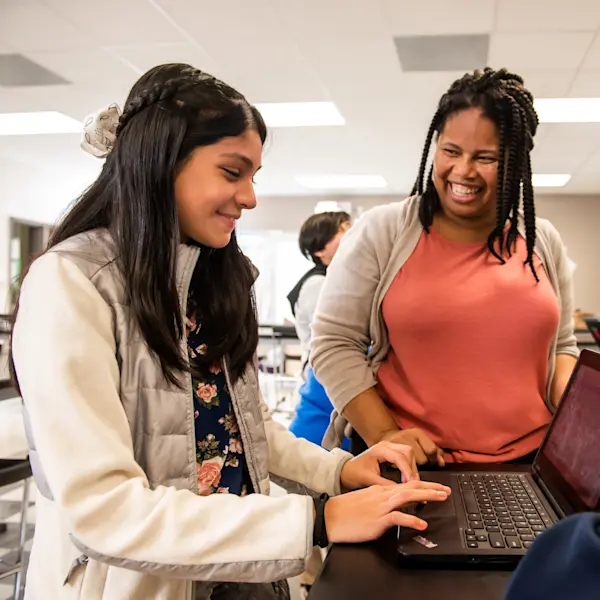Certificate in Applied Computing Stage 1
Help your students take their first steps towards a rewarding career with stage 1 of our Certificate in Applied Computing. Run in partnership with Greater Manchester Combined Authority as part of the Manchester Baccalaureate (MBacc).
Join stage 1
About stage 1
In stage 1, students will get a solid grounding in the essential digital skills needed for today’s digital world.
Designed for students aged 14 to 15, stage 1 explores key areas such as web design, digital media, and data. Students get hands-on, practical experience so they understand the technology and learn to use it confidently.
From a teacher perspective, stage 1 is a chance to equip learners with essential digital skills that will help them across the curriculum and enhance their future prospects. This is done within an independent, self-study framework that respects your time — there’s no marking needed.
While learning is self-paced, we recommend that students spend around 2 to 4 hours a week to make steady progress towards completing stage 1. They will take ownership of their own learning to earn a certificate of completion from the Raspberry Pi Foundation that they can show to colleges and future employers.

How to join the programme
1. Fill in this form to register your school. Stage 1 requires students to be at least 14 years old.
2. Make a note of your classroom code in the confirmation email.
3. Give this link to your students to join stage 1: rpf.io/acstage1.
4. Ask your students to complete the registration form embedded in the first step of the course, entering your classroom code. This will enable us to link them to you as an educator.

Outcomes
Your students will have a toolkit of essential digital skills after completing the certificate.
They will be able to:
Create engaging digital media, from eye-catching posters to compelling audio and video projects
Build their own websites through understanding the principles of effective web design
Work with data, using spreadsheets and the fundamentals of AI and machine learning
Navigate the online world safely and responsibly, protecting themselves and respecting others

Stage 1 module guide
Module 1: Visual communication – Working with text and images
Learn to create powerful visual messages by combining text and images. Develop skills in layout, typography, and composition by using digital design tools to produce posters and other media. Explore how to shape and express a brand’s visual identity.
Module 2: Data essentials – The power of spreadsheets
Discover how to manage and visualise data using spreadsheet software. From basic layout and formulas, to creating charts, this module builds practical skills through hands-on tasks and culminates in a real-world data project.
Module 3: Digital wellbeing – Safety, responsibility, and security
Build the knowledge and confidence to navigate the digital world safely. This module explores online threats, personal data protection, reputation management, and critical evaluation of digital content, with a focus on both personal and professional use.
Module 4: Digital storytelling – Audio and video production
Dive into the world of digital media creation. Plan, record, and edit both audio and video content using industry tools. Bring together your new skills to create a compelling multimedia project at the end of the module.
Module 5: Connecting to the world – Build your own website
Learn the principles of effective web design and development. Plan, structure, and create websites that focus on user experience and visual appeal. Try out the tools and techniques used by today’s web designers.
Module 6: Using artificial intelligence – Grasping the fundamentals
Gain a grounding in artificial intelligence (AI) by exploring how AI systems can support creative and practical tasks. Learn to use AI tools responsibly to assist with content creation and everyday activities, drawing on knowledge from the modules covered. Reflect on the ethical and societal impacts of AI in everyday life.